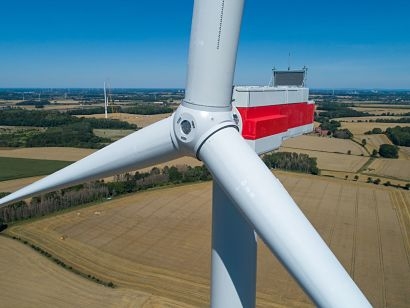
Azora will operate the Cypress turbines at 5.5 MW, with a rotor diameter of 158 metres, the most powerful ever permitted in Spain. The order is the first in Spain for GE’s Cypress platform, the company’s largest onshore wind turbine in the field. The agreement also includes a 30-year services agreement.
The Cypress wind turbine has a revolutionary two-piece blade which will be produced by GE’s wind turbine blade subsidiary, LM Wind Power, which operates a site in Castellón, Spain. The facility was expanded in 2018 and currently employs around 650 people. The towers for the wind turbines will be produced in Spain, with the nacelles being produced at GE’s European factory in Salzbergen, Germany.
“We are very excited about the opportunity of working together with GE in this fantastic project, which will be the first to implement this revolutionary new turbine in Spain” said Santiago Olivares, Managing Partner in charge of Infrastructure and Energy Investments at Azora. “The Cuevas de Velasco Wind farm will produce more than 300.000 MWh per annum, contributing to Spain´s objective of generating cleaner, cheaper and more efficient energy.”
Peter Wells, President & CEO, Onshore Wind, Europe & Sub Saharan Africa, added that Azora is a major investor in wind energy in Spain and that GE is very proud to bring additional clean, affordable, renewable energy and to contribute to the development of the wind industry in Spain.
Spain has set an objective in its National Energy and Climate Plan (PNIEC) to reach 50 GW of installed wind power by 2030, resulting in the installation of 2,300 MW annually during the decade. According to the Spanish wind power association, Asociación Empresarial Eólica (AEE), wind power could meet 34 percent of the national electricity supply by 2030, up from just under 21 percent in 2019.
The Cypress onshore wind platform enables significant Annual Energy Production (AEP) improvements, increased efficiency in service ability, improved logistics and siting potential, and ultimately more value for customers. The two-piece blade design enables blades to be manufactured at even longer lengths, improving logistics to drive costs down and offer more siting options in locations that were previously inaccessible.
For additional information:

